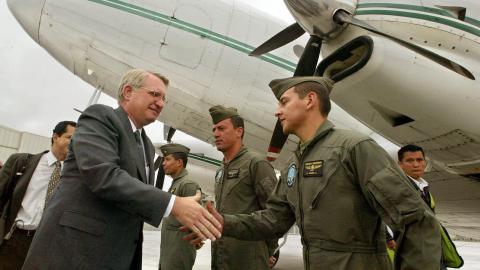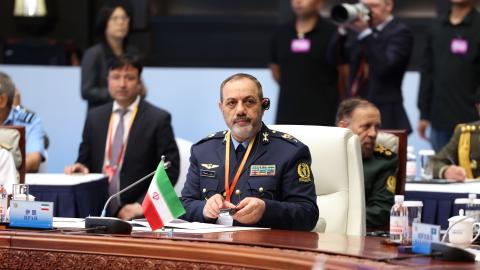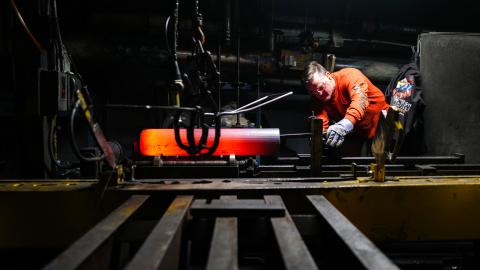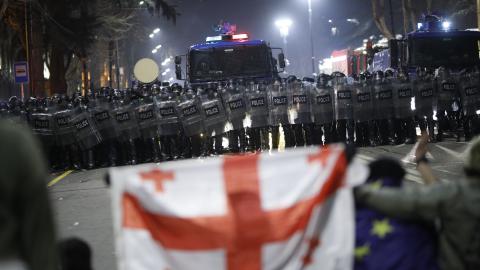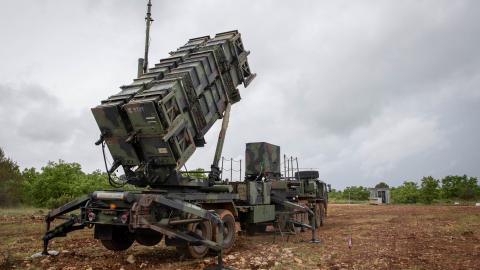The moral core of Ronald Reagan's Strategic Defense Initiative (SDI) was expressed in a question the president posed in his historic speech of March 23, 1983. He asked the nation: "Wouldn't it be better to save lives than avenge them?" In reply to his own question, Reagan proposed a new policy for protecting the U.S. from nuclear attack.
Under SDI, he said, the U.S. would develop defensive systems to intercept attacking missiles. No longer would the U.S. depend only on "mutually assured destruction," or MAD. MAD was the policy by which we had until then deterred our then sole nuclear armed adversary, the Soviet Union, We did so with the credible threat of an overwhelming, annihilating U.S. counterattack with our own nuclear-tipped missiles.
When the Soviet Union collapsed more than 20 years ago, Russia inherited its nuclear arsenal. With Russia then being regarded as a country whose course would be peace-loving and democratic, many hoped that the last threat of nuclear-tipped missiles attacking the U.S. homeland would also disappear. But those hopes have not been vindicated.
Since the end of the Second World War, the U.S. has developed, manufactured and maintained nuclear weapons principally for their deterrent value. The efficacy of this "deterrent" function depends on whether the adversary believes that the U.S. has sufficient nuclear capabilities to enable it to launch a counterattack that would hold at risk assets valuable to the adversary, thereby delivering an intolerable crippling blow. It also depends on whether the adversary contemplating a nuclear attack on the U.S. believes that American leaders would have the will to use those nuclear capabilities to counterattack.
Today, it is important to ask three questions:
- First, what nuclear capabilities does the U.S. need to maintain deterrence?
- Second, is deterrence alone sufficient to protect Americans?
- Third, can missile defense systems otherwise contribute to our safety and security by augmenting deterrence?
The answer to the first question is that the U.S. must maintain nuclear weapons in sufficient numbers and in sufficiently dispersed deliverable locations that they can serve as a counterattack threat to any potential adversary while being immune from annihilation in a surprise first strike by any well-armed nuclear adversary. Additionally, U.S. leaders must convey an unmistakable message that the U.S. is fully prepared to use its military capabilities, including its nuclear weapons, to respond to any attack on U.S. interests. Such interests include those of friends and allies under the U.S. nuclear umbrella; that is, countries that the U.S. convinced to rely on the U.S. nuclear deterrent and to forgo their own.
Today, there are several countries that are or might well slip into adversary or even enemy status and which have the means, or soon will, to launch an attack on the U.S. with missiles delivering nuclear warheads. In different ways and for different reasons, Russia, China, Iran and North Korea all fall into that category. Terrorists, too, may be the source of a missile-launched nuclear attack, with capabilities they acquire by theft or by procurement.
Twenty years ago, the U.S. forswore further development, testing and manufacture of nuclear weapons. Since then, it has dramatically reduced the number of its operationally deployed nuclear weapons and delivery systems. At least in part, these steps were taken in the hope that other countries would follow suit.
That did not happen, however. Russia and China both continue to develop, test and manufacture nuclear weapons. While Russia has reduced the number of its strategic nuclear weapons, it has dramatically increased the number of its tactical nuclear weapons. It has accompanied that increase with a military doctrine that asserts that Moscow will use its nuclear arsenal for tactical advantage. Meanwhile, there is good evidence, in part supplied last year by a former head of Russia's strategic forces (a person in a position to know) that China has increased its nuclear arsenal, including its strategic nuclear weapons capability, well beyond the estimates of U.S. intelligence agencies and the arms control community.
In recent years, a military leader of Russia and another of China each made a not-so-veiled threat that his country would consider targeting a U.S. city with a nuclear tipped missile should the U.S. do this or that. Should Russia or China get into a dispute in which the U.S. opposes their respective interestswhether in the context of a dispute between Russia and a European ally, like Poland, or in the context of a dispute between China and an East Asian ally, like Japanit is important to consider what factors they would consider in deciding whether to take the risk of using strategic or tactical nuclear weapons against the U.S.
Russian or Chinese leaders in the posited situations surely would be mindful of the steps the U.S. already has taken to reduce and weaken its nuclear weapons capabilities. They would certainly evaluate whether they could preclude a nuclear counterattack by locating and eliminating the remaining U.S. nuclear forces through a nuclear first strike. Whether their own missiles would be intercepted before reaching their targets would be a factor in this calculus.
The U.S. today deploys approximately 30 ground-based interceptors in Alaska and California. When coordinated with other detection and tracking missile defense systems, these interceptors can shoot down incoming nuclear-armed missiles. However, according to a September 2012 report of the National Academy of Sciences' National Research Council, the capabilities of this system are limited. The same report recommends that the system be improved, but also notes that the resources to do so have not been provided.
Going forward, the U.S. is likely to confront adversaries with nuclear-armed missile capabilities that are less likely to be deterred by the threat of a U.S. nuclear counterattack than Russia or China may be. Iran is on the precipice of having long-range ballistic missiles (it has already launched a satellite into orbit) and nuclear weapons as well. It has been working assiduously on marrying the two, all the while threatening to use the nuclear weapons it acquires to "annihilate" at least one of its perceived enemies, Israel. Some Iranian leaders appear to entertain religious beliefs supporting the use of nuclear weapons without regard to the cost in human life.
North Korea has tested nuclear devices at least three times. This past December, it successfully placed a satellite into orbit, thereby showing that it has a long-range missile capability. The regime that runs North Korea is unpredictableand rogue. And just this February it acknowledged that it is developing nuclear weapons and long-range missiles to deliver them to "settle accounts" with the U.S., in the words of an official report of North Korea's top military body.
Protecting Americans from nuclear missile attack by North Korea or Iran may require more than deterrence. It should go without saying that deterrence will not afford protection from rogue or negligent Russians or Chinese or from terrorists using ships offshore to launch nuclear weapons and missile resources they acquired by theft or otherwise. Apart from further deterring nuclear powers like Russia and China by reducing the chance that a first strike against U.S. counterattack assets will eliminate them, missile defense could provide protection in these instances.
Critics of President Reagan's SDI program argued that missile defense couldn't be made to work, that it would be too expensive to develop, and that offensive nuclear strategic missiles could inexpensively be equipped with penetration aids, decoys and other devices to defeat interception. Despite these arguments, U.S. missile defense tests have been increasingly successful and capabilities have dramatically improved in the intervening years, although not as rapidly as would have occurred had they received more substantial political and financial support.
In his SDI speech, Reagan acknowledged that it might take "decades" to develop the necessary technology. Three decades later, notwithstanding continuing arguments of naysayers, the considerable capabilities of our missile defense systems are evident, as are the even greater capabilities that could be developed, if they are properly supported.
Today's threat is different from the threat in 1983, but it is just as great. The danger now comes not from one potential adversary but from several as well as from terrorists. Reagan's vision of a missile-defense system to protect the U.S. from intimidation or attack is as pertinent as it was in 1983.


